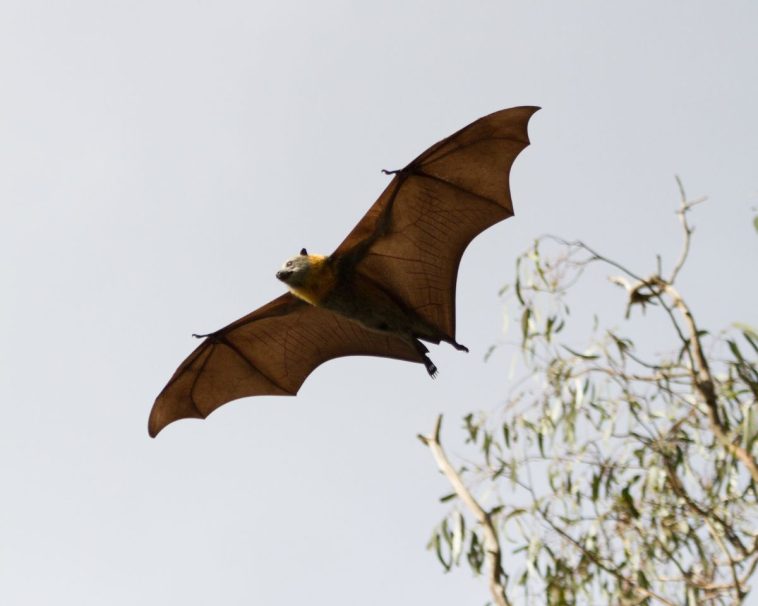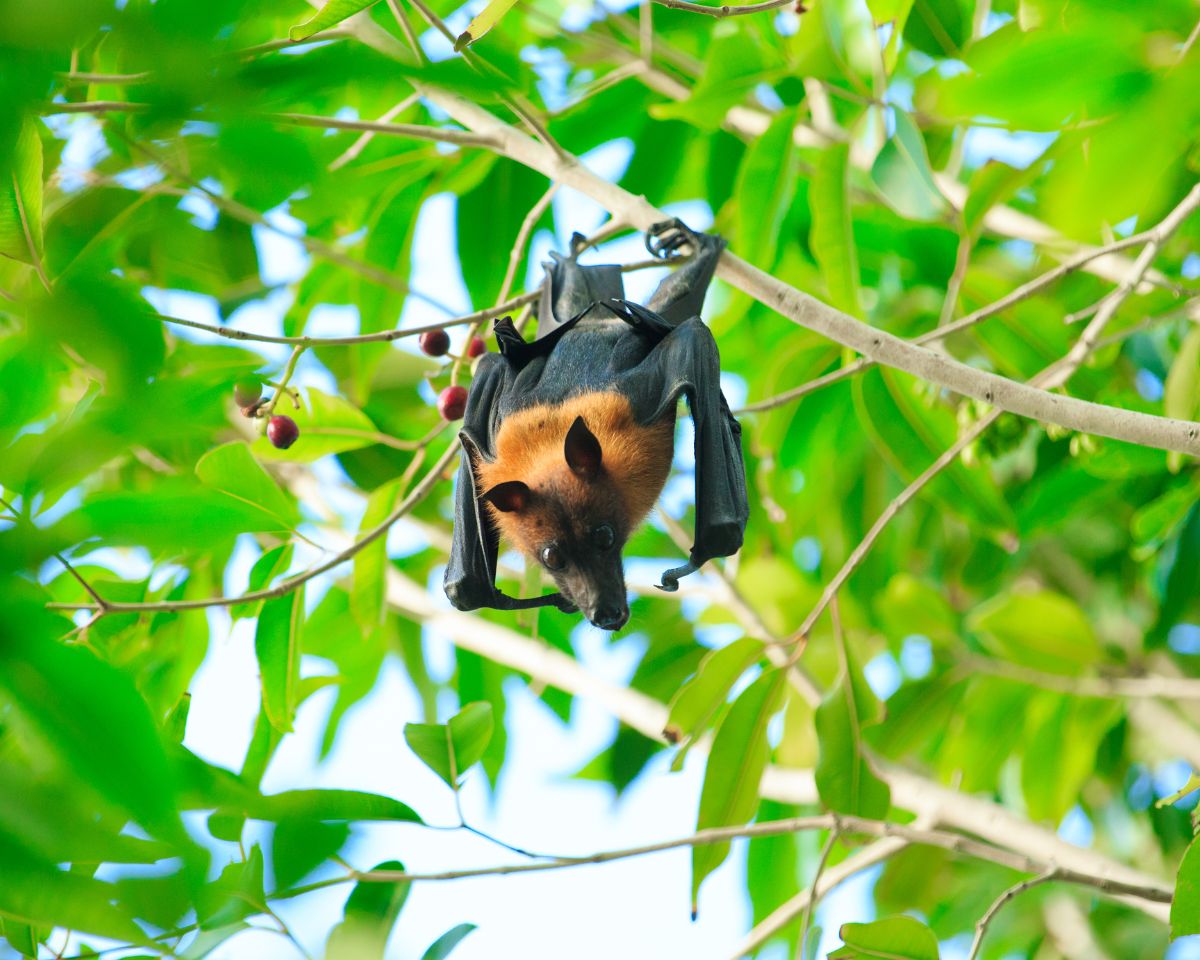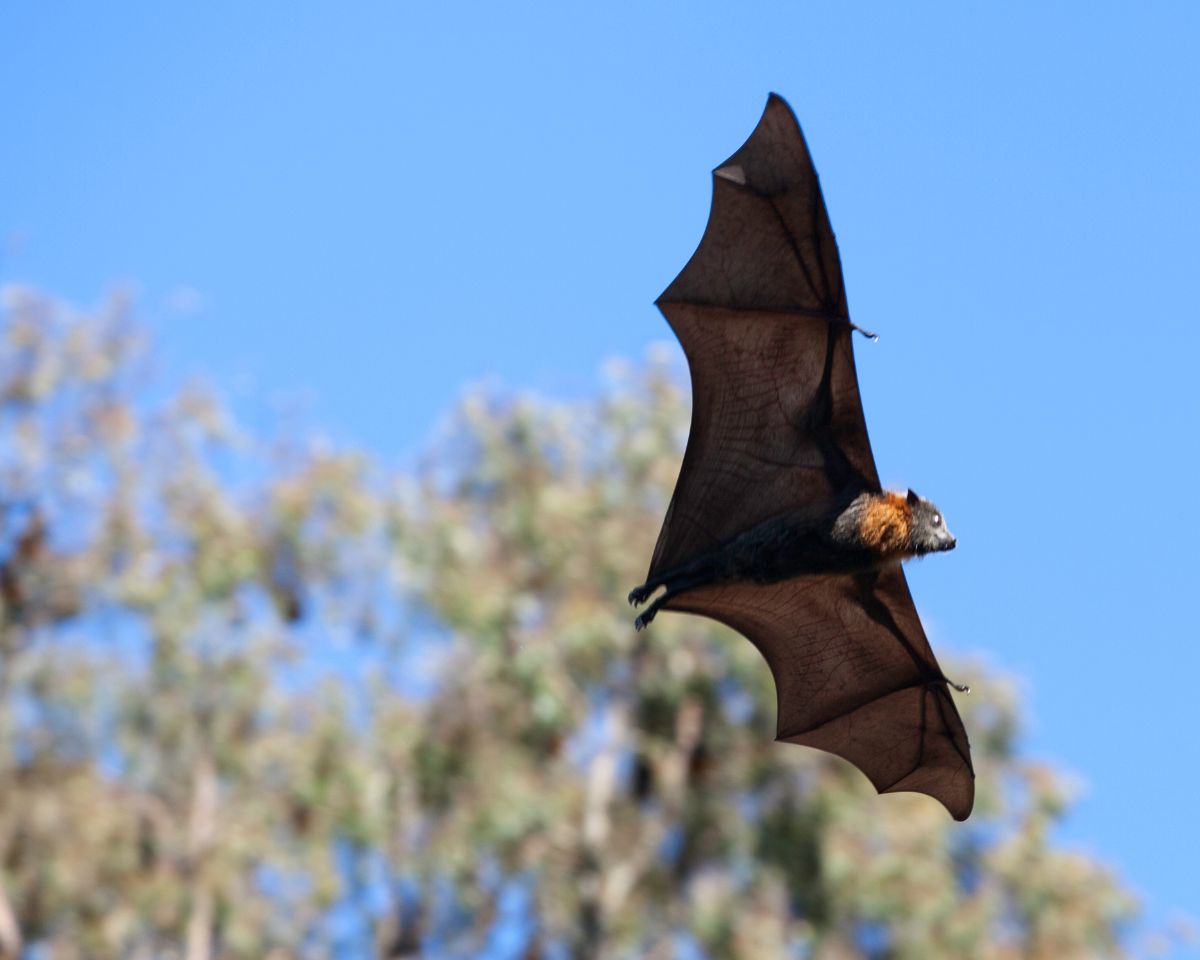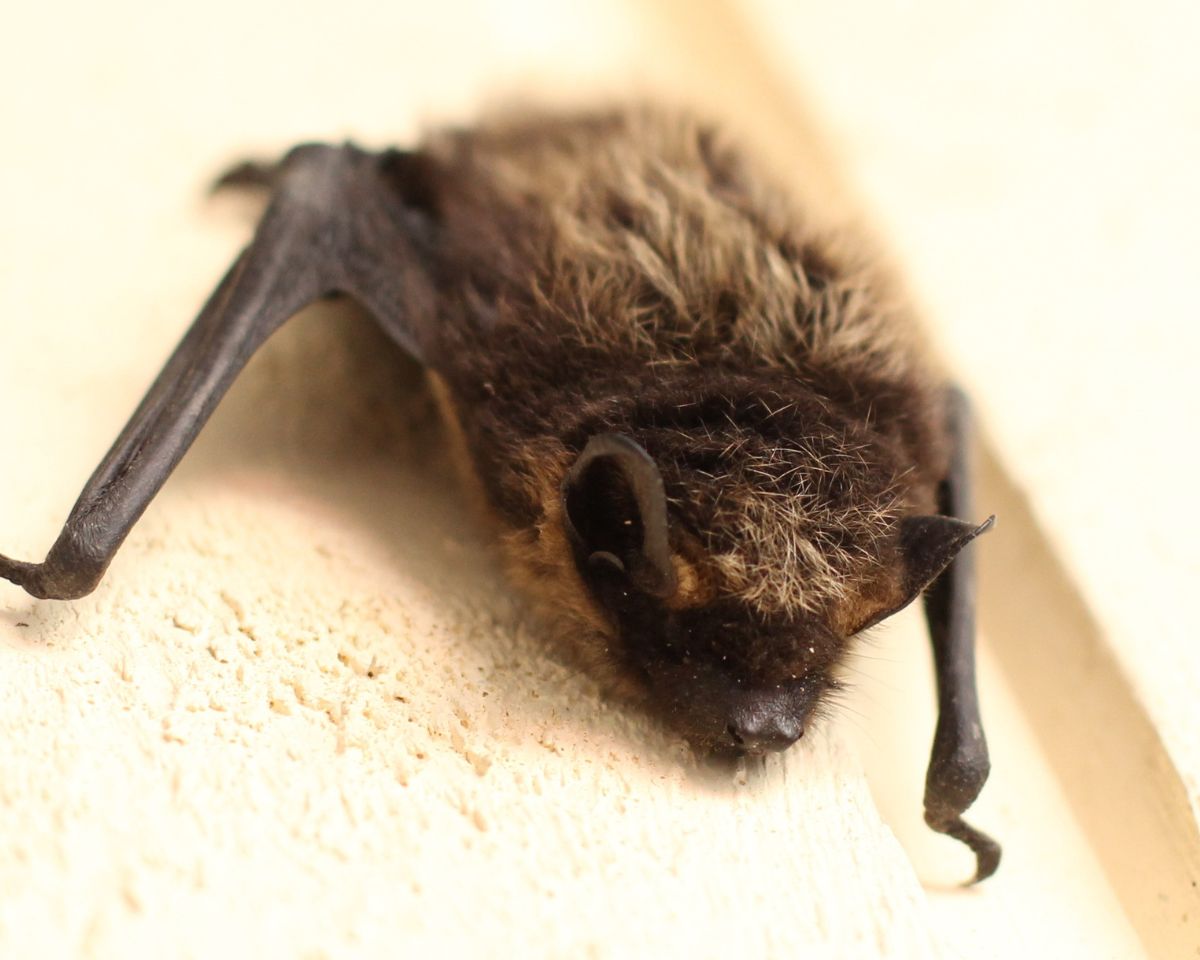Bat Communication

Bats communicate with each other through echolocation, emitting high-pitched sounds that bounce off objects and return to their ears. This allows them to navigate in the dark and locate prey.
Bat socialization is a fascinating subject that sheds light on the intricate communication system of these nocturnal creatures. Through a variety of vocalizations, bats maintain contact within their communities and establish territorial boundaries.
Discover the captivating world of bat vocalizations, where every echo is a symphony of survival. These vocalizations form a complex language, ranging from high-pitched squeaks to low-frequency calls, each carrying a distinct message.
Bats use echolocation, or nature’s sonar, to navigate their environment. They emit high-frequency sounds and interpret the returning echoes to map their surroundings. This biological marvel is essential for bat survival, enabling them to hunt, avoid obstacles, and navigate with unparalleled precision.
Bats use high-frequency sounds to navigate and communicate, creating a sophisticated sonic landscape that is crucial to their survival. These acoustic signals serve as both navigation tools and a complex system of communication, allowing bats to thrive in their environments.
Bats use their exceptional hearing abilities to navigate and locate prey in the dark. Their ears are finely tuned to detect high-frequency sounds, which bounce off objects and provide them with a detailed map of their surroundings.
Bats attract mates by making unique calls that are high-pitched and complex, which helps them communicate in loud environments.
Bats attract mates by emitting distinct calls that are both high-pitched and intricate. These calls enable bats to communicate with one another even in noisy surroundings.
Bats are territorial creatures, marking their territory with scent and sound. They fiercely defend their roosting sites and feeding grounds from other bats, often engaging in aggressive behavior.
Bats don’t just live in their roosts; they use them as hubs for socializing. They communicate with each other using a variety of sounds, including high-pitched whistles, trills, and chirps.
Bat Socialization
Enter the captivating world of bat socialization, a nocturnal symphony that illuminates the dark. Their unique communication system, characterized by a variety of vocalizations, weaves the fabric of their tight-knit communities.
Each bat vocalization plays a specific role, with ‘social calls’ taking center stage. These calls aren’t just casual chirps in the darkness; they serve as vital lifelines, maintaining contact within their groups and establishing territorial boundaries.
Beyond simple interaction, bats also employ these social calls as practical tools for navigation. They rely on these vocal cues to locate their roosting sites, often hidden in the darkest, most secluded corners of our world.
Studying bat socialization provides a window into a remarkable, often overlooked aspect of the natural world. As we unravel the intricate language of these fascinating mammals, we gain a deeper understanding and appreciation of their complex social structures.
Bat Vocalizations

Dive into the intriguing world of bat vocalizations, where every echo is a symphony of survival. Far from random, these vocalizations form a complex and diverse language, ranging from high-pitched squeaks to low-frequency calls, each carrying a distinct message.
Bats use different vocalizations to communicate vital information within their community. These calls serve various purposes, from warning of danger to attracting mates and maintaining group identity.
These vocalizations aren’t mere sounds; they’re evolutionary marvels. Bats have developed specialized vocal cords and a keen sense of hearing to master this auditory landscape, allowing them to identify fellow bats and navigate their environment.
Bat vocalizations offer a fascinating insight into the sophisticated communication system of these extraordinary mammals. Their diverse and complex sounds reflect a high degree of intelligence and adaptability, underscoring the unique survival strategies of bats.
Bat Echolocation
Echolocation, nature’s sonar, allows bats to emit high-frequency sounds, interpreting the returning echoes to map their environment. This biological marvel is essential for bat survival, enabling them to hunt, avoid obstacles, and navigate with unparalleled precision.
Three Key Aspects of Bat Echolocation:
Ultrasonic Vocalizations: Bats produce sounds that reach beyond human hearing capabilities, enabling them to navigate the night silently and efficiently. Species-Specific Sounds: Each bat species produces unique vocalizations, acting like sonic signatures that aid in species identification during social interactions. Echolocation in Courtship: Bats don’t restrict echolocation to navigation; they employ vocal communication in courtship rituals. Intriguingly, males with more complex songs often attract more females.Bat echolocation is a remarkable adaptation, illustrating the fascinating complexity of these nocturnal navigators. This bio-sonar system is a testament to the adaptability and ingenuity of bats, enabling them to thrive in the heart of darkness.
Bat Acoustic Signals
Bat acoustic signals, a sophisticated sonic landscape that guides their survival. Bats emit high-frequency sounds that serve not only as navigation tools but also as a complex system of communication.
Bat Social Communication:
Bats utilize a diverse array of vocalizations for social interactions. These acoustic signals serve specific purposes, such as attracting potential mates, defending territories, and warning others of potential threats. Each bat species possesses a unique acoustic signature, adding to the rich diversity of their sonic communication.
Acoustic Navigation:
Beyond social interaction, bat acoustic signals play a vital role in navigation. Bats use specific calls to identify themselves and mark their locations, aiding in the discovery of communal roosting sites and feeding grounds.
The acoustic signals of bats offer an intriguing insight into these nocturnal navigators’ sophisticated communication systems. Their effective use of sound, from navigation to social interactions, underscores the remarkable adaptability and resourcefulness of these creatures.
Bat Hearing

Bats boast an extraordinary sensitivity to sound, enabling them to navigate and pinpoint prey in total darkness.
Bats have evolved to detect high-frequency sounds between 20 and 200 kHz, courtesy of their specialized ears. These ears are fine-tuned to specific sound frequencies, capable of discerning minute differences that are only a few hertz apart.
This sensitivity to sound isn’t merely for navigation; it’s also integral to bat communication. Bats use their exceptional hearing to interpret a wide range of vocalizations, from simple clicks to complex calls, each carrying unique information.
These vocalizations serve various purposes, including attracting mates, locating food, and interacting with their community. The brain of a bat is uniquely adapted to process these sounds, enabling it to decode messages from fellow bats with impressive accuracy.
In essence, the auditory prowess of bats is a testament to their remarkable adaptability and resilience. Their hearing abilities showcase the fascinating complexity of these nocturnal navigators, illuminating their intriguing survival strategies in a world shrouded in darkness.
Bat Mating Calls
Bats use unique mating calls to attract potential partners. These calls are often high-pitched and complex, allowing bats to communicate with each other in noisy environments.
Male bats generate a diverse range of mating calls to attract potential mates. These sounds range from high-pitched screeches to low-frequency grunts, each note bearing a specific message.
These mating calls provide significant information about the caller, such as their species, sex, and fitness level. Female bats, upon receiving these signals, make a choice: to approach the suitor or to fly away, thus demonstrating the crucial role these calls play in bat mating behavior.
Bat mating calls provide a fascinating look into the intricacies of communication in the animal kingdom. These specific vocalizations highlight the unique strategies bats employ for reproduction, illustrating the delicate balance between survival and propagation in the wild.”
Bat Territoriality

Bats, living in complex colonies, employ unique vocalizations to establish and defend their territories. These territorial calls are distinct from mating sounds and are primarily used to secure their roosting sites.
Such calls peak during high-activity periods, such as when bats are entering or leaving their roosts. Depending on the behavioral context—be it aggression or submission—the nature of these territorial calls can vary.
Bat territoriality showcases an intricate facet of their survival strategy, underscoring the strategic use of sound in their social structure.
Bat Roosting Habits
Bats use their roosts as more than just homes; they are critical centers of social interaction. Within these roosts, bats employ a range of vocalizations for communication.
These vocalizations, comprising high-pitched whistles, trills, and chirps, are instrumental in establishing social hierarchies and coordinating group activities within the roost. They also enable bats to share vital information, such as food sources and roost locations.
Remarkably, bats are capable of recognizing the vocalizations of specific individuals, suggesting complexity in their social relationships. Thus, roosting habits offer a window into the rich social dynamics of bats.
Bat Foraging Strategies
Bats employ a diverse array of foraging strategies, utilizing their remarkable senses. Some species use echolocation, emitting high-pitched calls and interpreting the returning echoes to locate and identify prey.
Others rely on social communication, with a lead bat guiding others to food sources. Certain species use tactile communication, detecting vibrations to find food.
These strategies show their adaptability, with some bats being opportunistic feeders, while others maintain specialized diets. The proficiency of bats in utilizing these various methods makes them effective hunters and intriguing subjects in the study of animal behavior.









